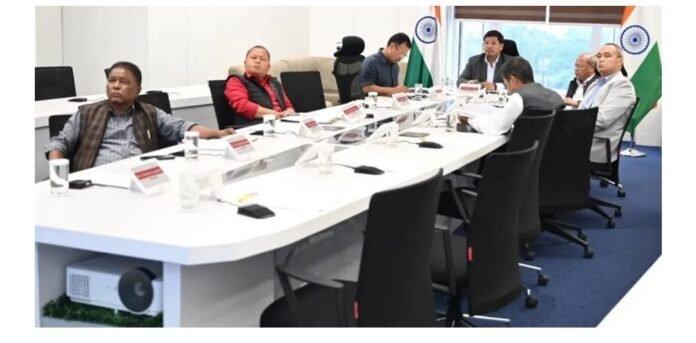The Hynniewtrep National Liberation Council (HNLC), a militant organization operating in Meghalaya, has expressed a hopeful yet cautious stance regarding the proposed peace talks with the Meghalaya government. With aspirations of an independent homeland for the Khasi and Jaintia tribes, the HNLC’s engagement in intermittent peace negotiations reflects their desire for a resolution to the longstanding conflict. This article delves into the prospects and challenges surrounding the peace talks, highlighting the complex nature of the conflict and the uncertainties that lie ahead.
Meghalaya, a state in Northeast India, has witnessed the HNLC’s struggle for self-determination since its formation in 1992. The organization advocates for the interests of the Khasi and Jaintia tribes, asserting their cultural, political, and economic rights. Over the years, the HNLC has employed various tactics, including armed attacks and disruptions, to draw attention to their cause.
In response to the HNLC’s activities, the Indian government has conducted counterinsurgency operations, leading to sporadic periods of violence and instability in the region. However, recognizing the need for a peaceful resolution, both parties have engaged in dialogue and ceasefire agreements in the past, albeit with limited success.
Despite the challenges, the HNLC has expressed hope for a positive outcome from the proposed peace talks with the Meghalaya government. The organization recognizes the potential of these negotiations to address the deep-rooted grievances and bring about a meaningful resolution to the conflict. They believe that a peaceful settlement can pave the way for greater autonomy and the safeguarding of the tribal communities’ interests.
The HNLC hopes that the peace talks will provide a platform for constructive discussions on issues such as tribal rights, cultural preservation, and equitable development in Meghalaya. They seek to address historical injustices and ensure the tribal communities have a voice in shaping their own future. The organization’s optimism reflects their willingness to explore peaceful avenues and find a mutually acceptable solution.
However, alongside their hopefulness, the HNLC maintains a cautious perspective, highlighting the potential challenges and uncertainties associated with the peace talks. The complex nature of the conflict, intertwined with political, social, and economic factors, presents significant obstacles to a successful resolution.
One of the major challenges is reconciling the differing aspirations and expectations of the HNLC and the Meghalaya government. Bridging the gap between demands for tribal autonomy and the government’s constitutional obligations requires delicate negotiations and compromises from both sides.
Additionally, ensuring the sustainability of any agreement reached in the peace talks poses another challenge. Previous ceasefires and agreements have been short-lived, leading to a cycle of broken trust and renewed conflict. Building a foundation for lasting peace requires robust mechanisms for implementation, monitoring, and addressing potential grievances.
The HNLC’s hopeful yet cautious stance regarding the peace talks in Meghalaya reflects the complexity and challenges inherent in resolving the longstanding conflict. While the organization acknowledges the potential for positive outcomes, they remain aware of the difficulties involved in reaching a successful resolution.
Achieving lasting peace in Meghalaya will require sustained commitment, trust-building measures, and a genuine willingness from both the HNLC and the Meghalaya government to address the underlying issues. As the peace talks progress, it is crucial to closely monitor developments and support the dialogue process, fostering an environment conducive to reconciliation and stability in the region.



